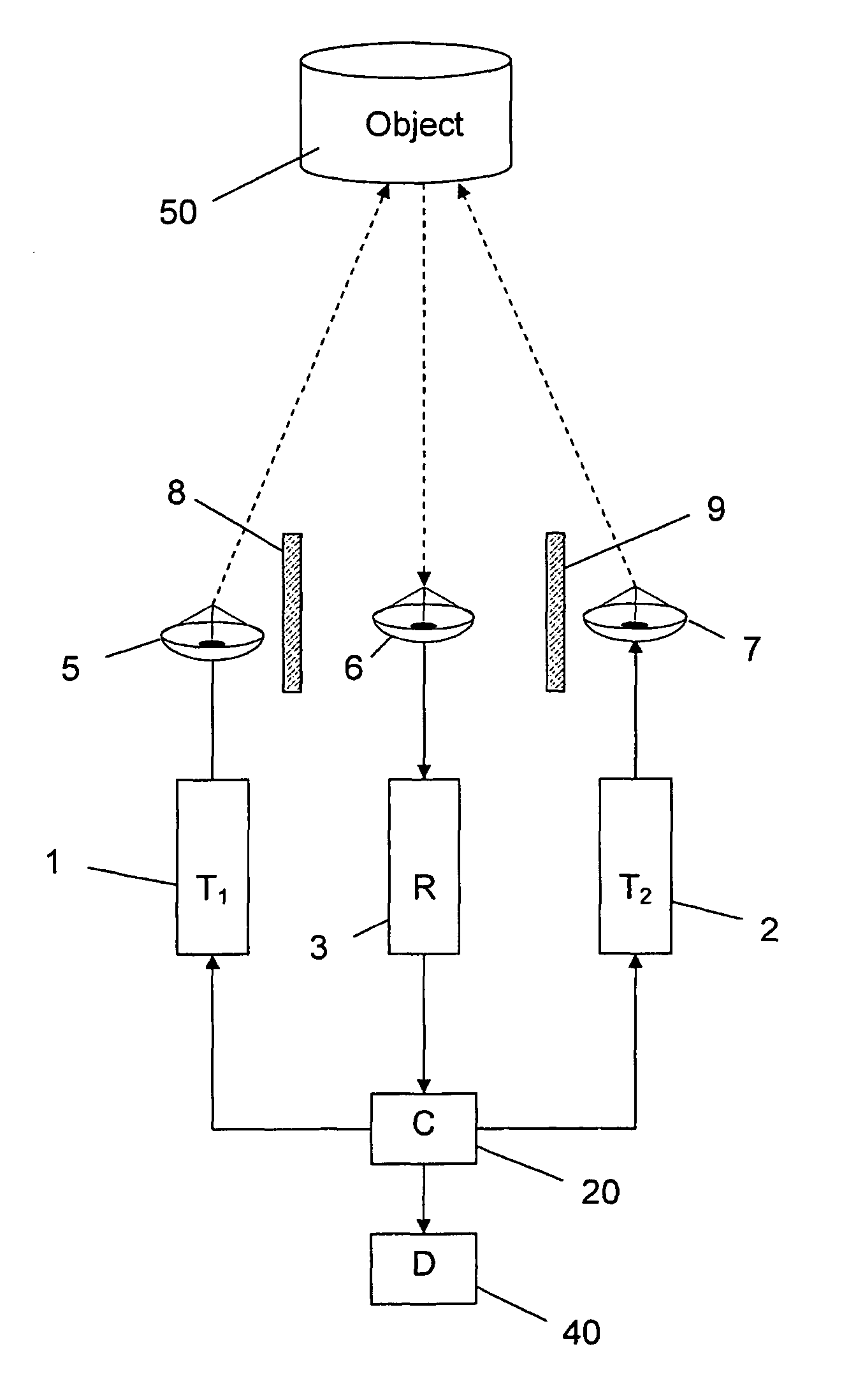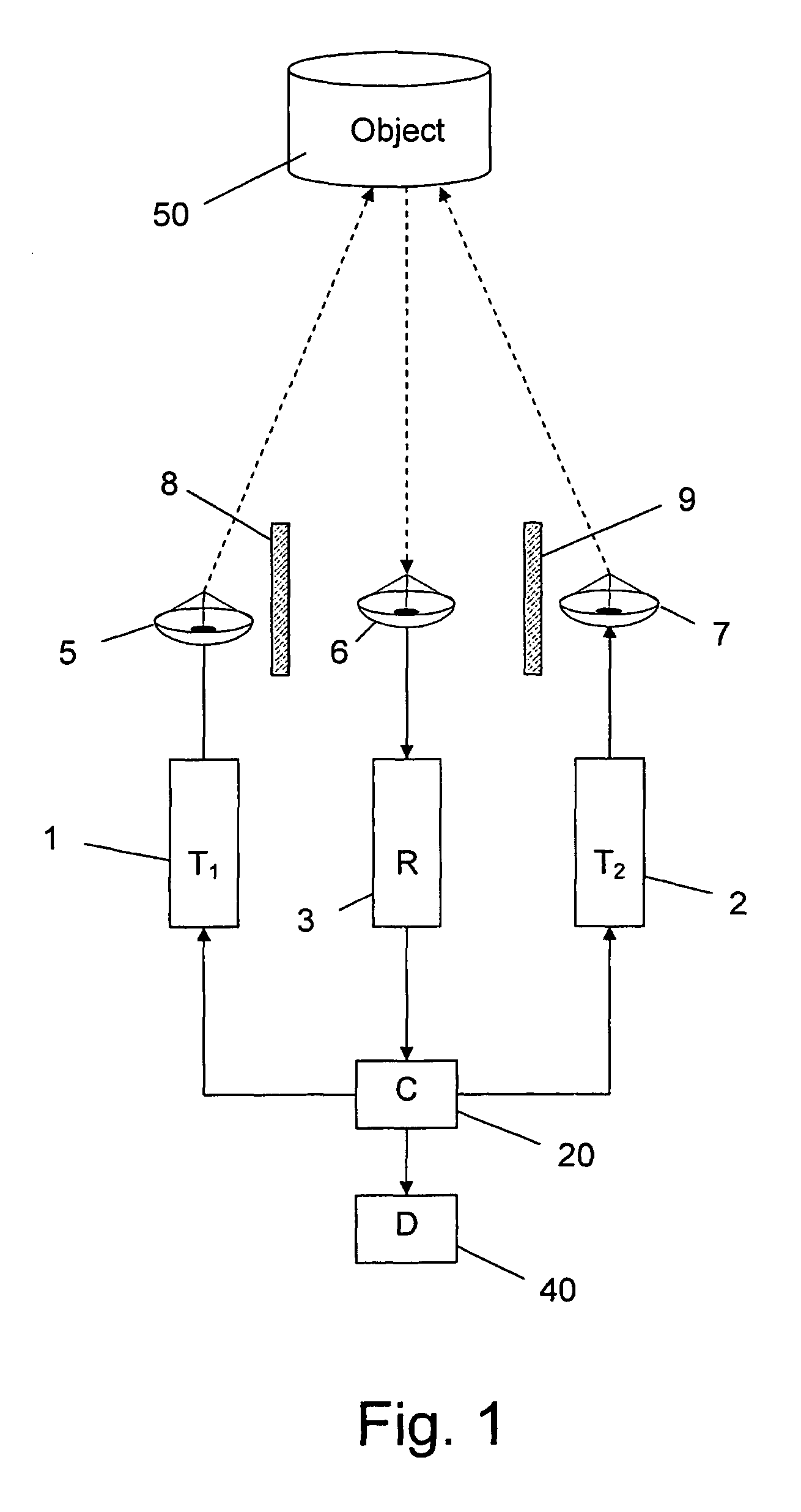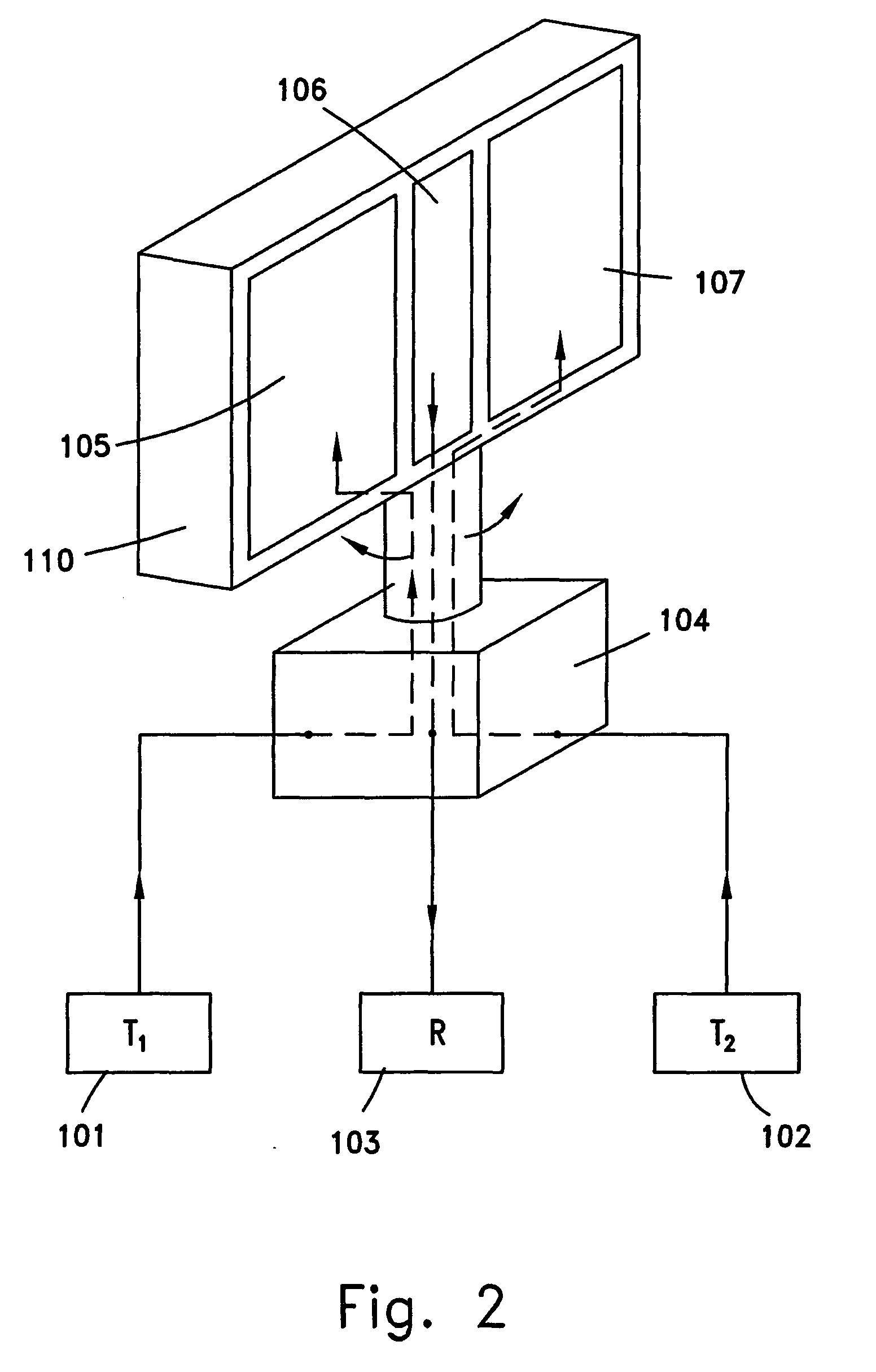Radar system and method
a radar and system technology, applied in the field of radar systems and methods, can solve the problems of short voltage, ineffective coupling, and difficulty in concentrating low frequency radiation on targets
- Summary
- Abstract
- Description
- Claims
- Application Information
AI Technical Summary
Benefits of technology
Problems solved by technology
Method used
Image
Examples
example
[0069]The following is an example for an efficient frequency selection that provides a system having high sensitivity to the detection of man-made objects. According to this example the transmitting frequencies are f1=2.74 GHz, f2=1.26 GHz, and the reception frequency is fr=4.0 GHz (being the sum f1+f2. In that case the harmonics created at the transmitter 2 are in frequencies 5.48 GHz, 8.22 GHz, 10.96 GHz, . . . etc., and the harmonics created at the transmitter 1 are in the frequencies 2.52 GHz, 3.78 GHz, 5.04 GHz, . . . , etc. It has been demonstrated that in this example the receiving frequency, when properly selected, is remote enough from each of the transmitting frequencies, and / or from any of their harmonics. Therefore, the sensitivity and the ability of the system to distinguish man-made target from their surroundings are improved.
[0070]In one preferred embodiment of the invention, the system of the invention comprises more than two transmitting units, transmitting at more ...
PUM
 Login to View More
Login to View More Abstract
Description
Claims
Application Information
 Login to View More
Login to View More - R&D
- Intellectual Property
- Life Sciences
- Materials
- Tech Scout
- Unparalleled Data Quality
- Higher Quality Content
- 60% Fewer Hallucinations
Browse by: Latest US Patents, China's latest patents, Technical Efficacy Thesaurus, Application Domain, Technology Topic, Popular Technical Reports.
© 2025 PatSnap. All rights reserved.Legal|Privacy policy|Modern Slavery Act Transparency Statement|Sitemap|About US| Contact US: help@patsnap.com



